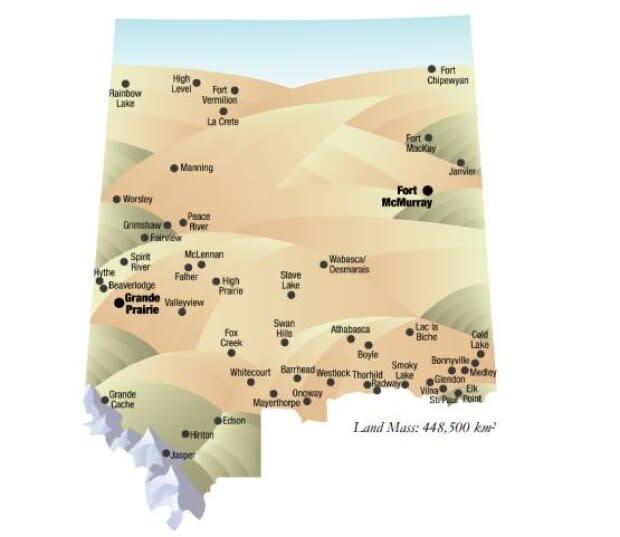Rural Albertans use ERs more than those in Edmonton and Calgary, review shows
Rural Albertans visit hospital emergency rooms for less urgent or non-urgent issues far more often than their urban counterparts, a review of Alberta Health Services says.
Those visits may reveal a shortage of primary care services and specific health programs in rural Alberta, according to experts.
"When we look at Alberta measures and lower emergency department rates in Calgary and Edmonton, that may not necessarily mean there's a better patient-to-specific-provider linkage," said Cynthia Carr, an epidemiologist with EPI Research, based in Winnipeg.
"But it might mean in the urban environment, there's more access to urgent care, walk-in clinics, etc."
Availability and accessibility of specific healthcare services is key to reducing non-urgent emergency department visits, said Carr, who has worked with northern and First Nations communities in Alberta.
In the fiscal year 2018-19, emergency departments (including urgent care) in rural hospitals north of Edmonton saw 1,053 visits per 1,000 people while ERs in Edmonton and Calgary saw fewer than 400 visits per 1,000 people, the AHS review showed.
Rural hospitals in central and southern Alberta saw 680 and 616 visits per 1,000 people respectively.
But of all emergency department visits in rural Alberta, 59 per cent were for less urgent or non-urgent issues, compared to 29 per cent in Edmonton and Calgary.
Why the differences in rural Alberta?
A transient worker population might be contributing to the higher number of visits to ERs in the north, said Lorian Hardcastle, a University of Calgary law professor who works with the U of C's Cumming School of Medicine.

"They may not have access to a family doctor," Hardcastle said. "They may not qualify for drug benefits in Alberta so may be using the emergency department because they're not taking pharmaceuticals that would otherwise be indicated for their condition."
AHS is aware of the need to reduce emergency department visits and has had some success in addressing the issue.
Trips to the emergency for "family practice sensitive conditions" (specific conditions a family doctor's office could address) have dropped by 7.4 per cent over the last 10 years, according to the AHS review.
There has also been a downward trend of more than three per cent since 2017-18 for emergency department trips in the northern part of the province, according to the AHS annual report for 2018-19.
There has also been a downward trend of more than three per cent in trips to the ER in the central zone, while the south zone has remained stable since 2017-18.
Looking at solutions
In an emailed statement, AHS said it is working on "low-acuity visits to our emergency departments through a number of programs and initiatives."
AHS cited Health Link 811 and the Enhancing Care in the Community program "which provides resources in the community, helping to divert patients from hospital."
One of the recommendations found in the review suggests AHS "strengthen its integration with primary care" by expanding community-based and home-care programs.
Specifically, the report's authors recommend to continue partnering with Primary Care Networks and primary care providers to develop pathways to reduce the number of family practice conditions being treated in emergency departments.
The report also suggests using digital tools, such as virtual care and online visit scheduling.
"Digital tools have great potential, especially in remote areas," reads the report.
Carr and Hardcastle believe AHS should work toward listening to the needs of rural communities in Alberta.
Hardcastle believes that tailoring services to meet the specific needs of rural Albertans — for example, mental health issues or addictions — could help bring down the number of less-urgent trips to the ER.
"There are a number of ways to improve the ER usage rate, if that's what they're concerned about. I think that improving services for mental health and addictions is one way they can do it."
The provincial government said on its website that AHS will engage staff and clinical leaders to develop a long-term implementation plan, which will go to the health minister this spring.
Carr hopes AHS and Alberta Health will also listen to the community.
"It's not necessarily that we have more serious illness in the north but it's the reason the people are using the emergency department and where those gaps in care and opportunities are to address the gaps in care," she said.
"It doesn't necessarily mean bring in 50 more physicians. It means let's look at what do people need and what they are telling what they need."

